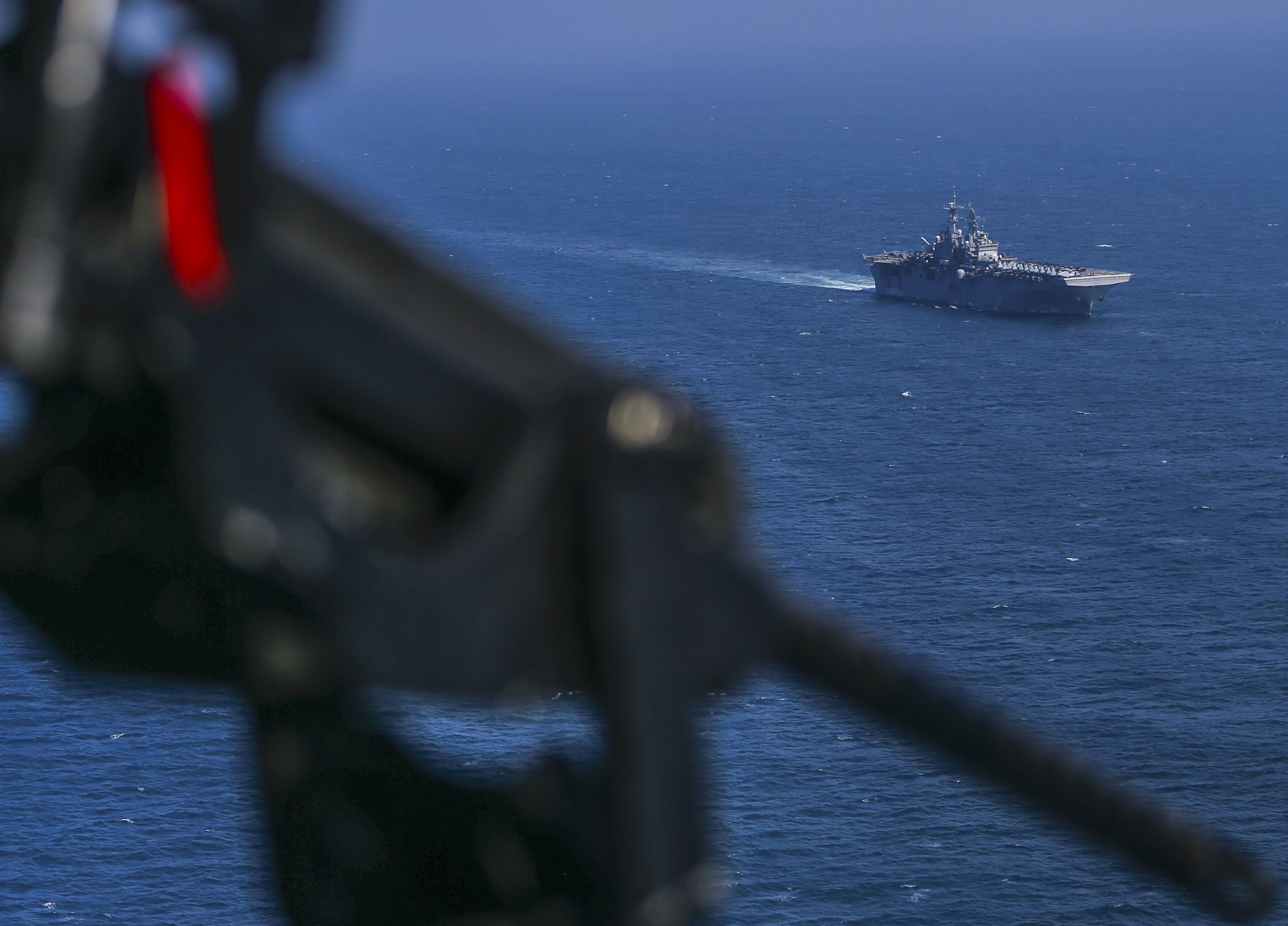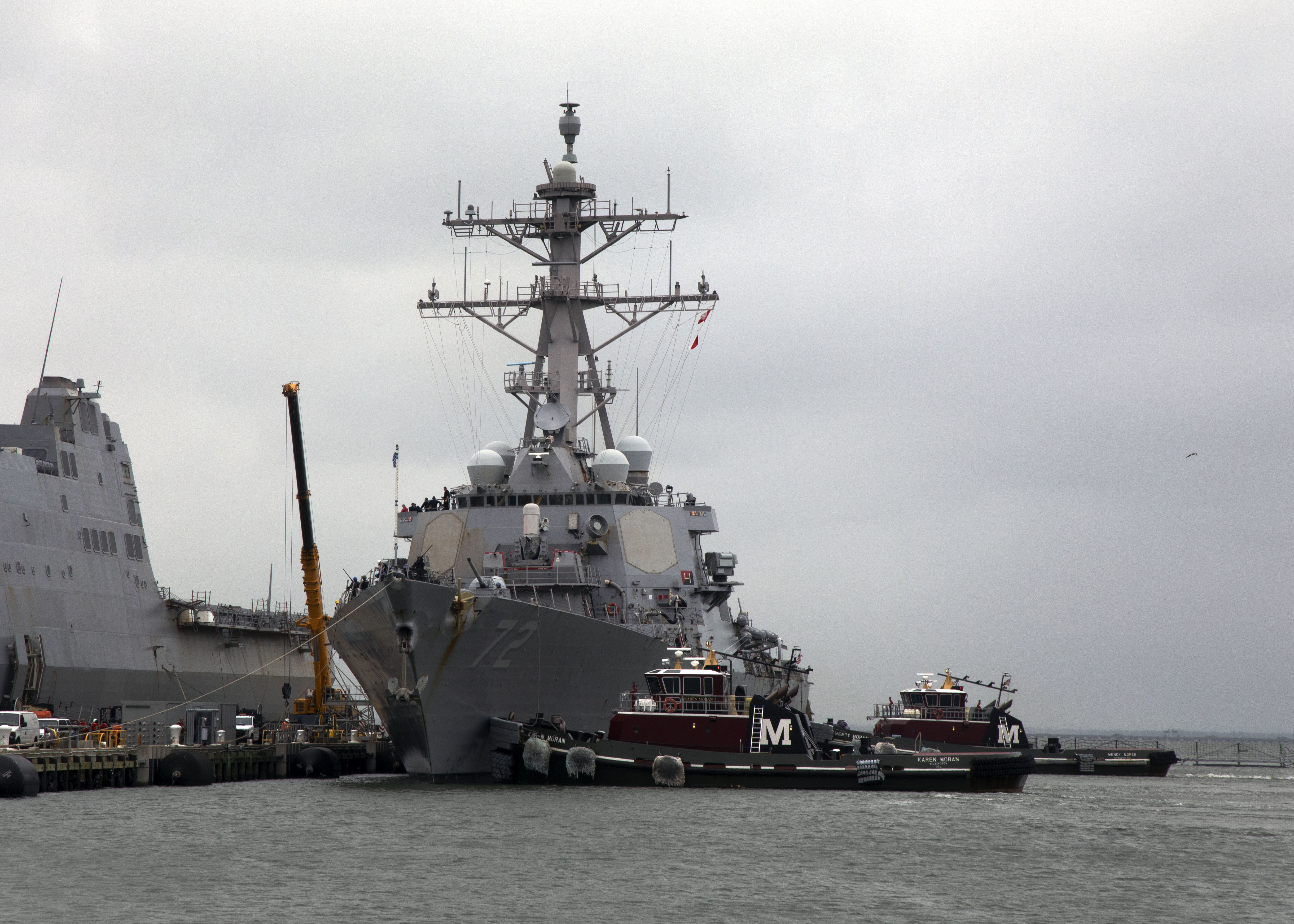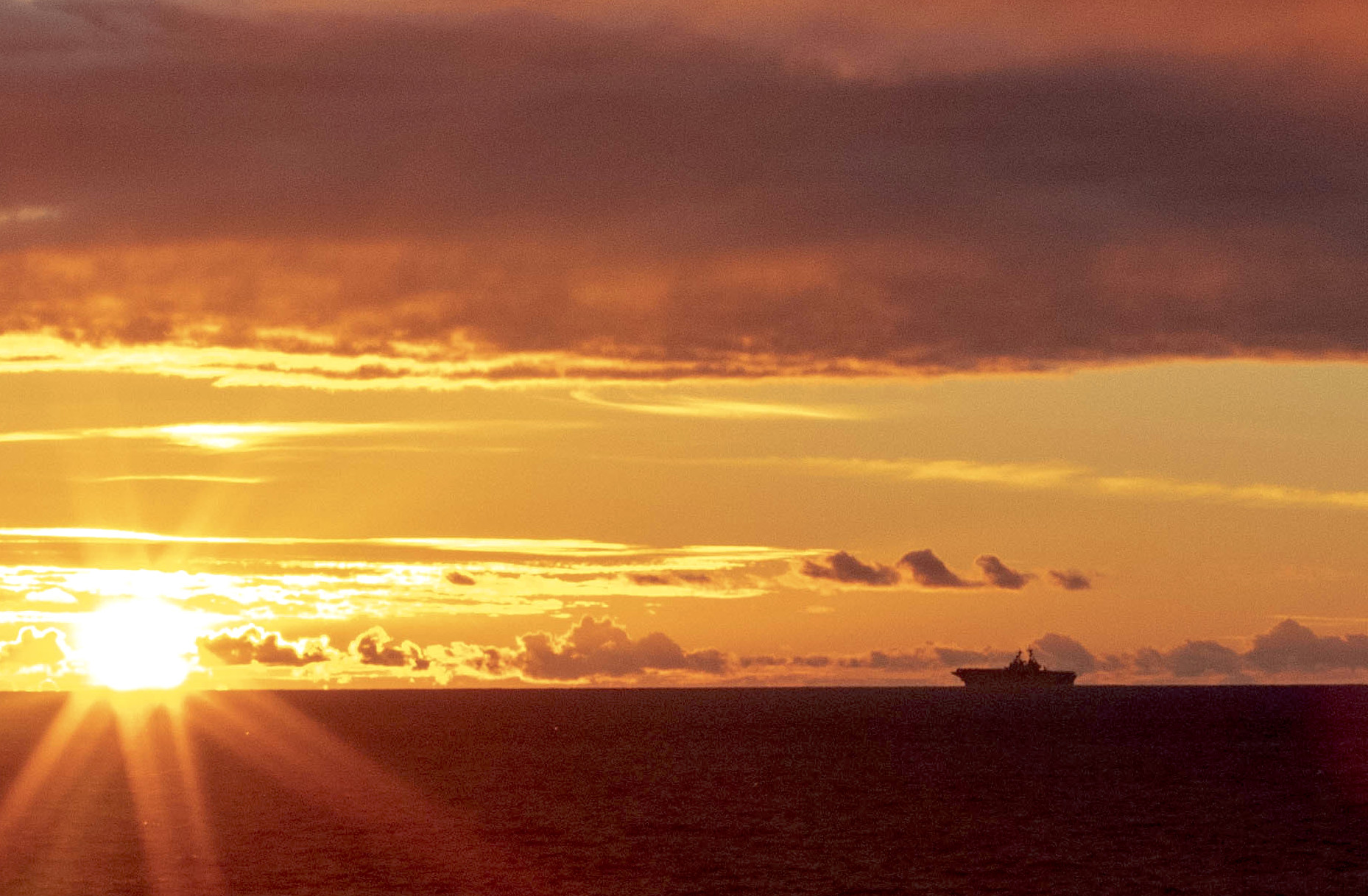
WASHINGTON, D.C. – U.S. 2nd Fleet is having deploying units test out new complex tactics on their way across the Atlantic, with each of these so-called Fleet Battle Problems contributing to an overall maturation of the concepts the Navy would use in a peer adversary fight, the commander said on Tuesday.
Vice Adm. Andrew Lewis said the battlespace in the Atlantic has changed significantly in recent years, and the way the Navy trains and fights has to keep up. As 2nd Fleet oversees the training and operations of maritime forces in the Western Atlantic, they’re having to contend with the presence of Russian forces in a way they haven’t had to in decades.
“The Atlantic is a battlespace that cannot be ignored. Our new reality is that when our sailors toss the lines over and set sail, they can expect to be operating in a contested space once they leave Norfolk. We have seen an ever-increasing number of Russian submarines deployed in the Atlantic, and these submarines are more capable than ever, deploying for longer periods of time, with more lethal weapons systems,” he said at an event hosted by the U.S. Naval Institute and the Center for Strategic and International Studies.
“As such, our ships can no longer expect to operate in a safe haven on the East Coast or merely cross the Atlantic unhindered to operate in another location. Whether USS Gerald R. Ford is underway in the Virginia Operating Area for aircraft compatibility testing, or USS Nitze is crossing the Atlantic returning from deployment, or USS San Jacinto is underway as a ready deck for one of the helicopter squadrons conducting training on the East Coast, our sailors have the mindset that they are no longer uncontested and to expect to operate alongside our competitors each and every underway.”
As an example, Lewis noted that USS Mahan (DDG-72) was at sea for the early stages of its training in late 2019 and encountered a Russian intelligence ship off the East Coast of the United States. He said the Russian ship didn’t care that Mahan’s crew wasn’t fully certified to conduct operations and hadn’t gone through advanced training; the destroyer had to be ready to keep itself safe in that environment regardless of where it was in the training cycle.
Amid an effort to further develop the Distributed Maritime Operations concept and train deploying forces to operate with those tactics designed for peer competition, the Russian presence closer to American shores somewhat complicates the Navy’s ability to do live operations. During pre-deployment training, the composite training unit exercise (COMPTUEX) graduation exercise includes some virtual and constructive training so that not all high-end tactics are visible and revealed to any adversary watching.

But still, forces deploying from the East Coast are using their transit across the Atlantic as an opportunity to experiment with DMO concepts and further develop tactics, Lewis said, much like the “Fight to Hawaii” transits that West Coast units do, using the time from San Diego to Pearl Harbor to practice emissions control and other defensive measures as well as seeking and fighting red forces in fleet exercises.
“We’re testing hypotheses of principles that are found in Distributed Maritime Operations,” Lewis told USNI News during a question and answer session at the event.
“Without going into too much of the detail, the [surface action group] that deployed in the fall was part of doing Fleet Battle Problems. Every deploying unit [has] to start in the Atlantic. And they’re going to, as they deploy – whether they are staying in the Atlantic, staying in the Western Atlantic or going to the Eastern Atlantic, or going to the Mediterranean, or going to the Persian Gulf – a portion of that deployment is an operation within the Atlantic, and that’s when it’s constituted a Fleet Battle Problem.”
He added that the Bataan Amphibious Ready Group and 26th Marine Expeditionary Unit conducted a “pretty sporty evolution” when they departed the East Coast for the Middle East, and he said each of these problems are constructed with the Russians and Chinese in mind.
After the event, Lewis told USNI News that the Navy Warfare Development Command is the executive agent for coming up with these Fleet Battle Problems and that 2nd Fleet and its West Coast counterpart, U.S. 3rd Fleet, are the “lead action officers” that conduct the testing with deploying units as they head out the door.
The Fleet Battle Problems are part of a larger learning effort that includes this summer’s Large Scale Exercise 2020, which will test the Navy’s ability to tackle operations in a peer competition environment. Each piece of this learning effort builds off of each other, so that 2nd and 3rd Fleets are learning in a collaborative way instead of a duplicative way, to flesh out the Distributed Maritime Operations concept and to build some standardization between the two fleets. Lewis said U.S. Fleet Forces Command and U.S. Pacific Fleet are committed to a “one fight, one Navy” approach.
Speaking of the willingness to challenge assumptions and test hypotheses, he said, “that’s a mindset shift, because we don’t like to fail. Nobody likes to fail, but to be able to fail and learn and then shift and be agile in your thought, this is the process that encourages that.”
In addition to this testing, Lewis said that the pre-deployment training 2nd Fleet is overseeing – specifically the COMPTUEX that serves as final certification – is growing increasingly complex and is leveraging live, virtual and constructive (LVC) training tools to ensure the fleet is prepared for the most sophisticated operations if called upon to fight a peer adversary.
“Each one of these certification events gets more and more complex, more and more what we would call high end,” Lewis said, noting that the Eisenhower Carrier Strike Group is undergoing this training now ahead of a deployment.
“We talk about how we fight; we have to tie that to how we train, because we’re never going to be better than how we train,” he said, adding that today’s COMPTUEXs “are the best and most challenging operating I’ve ever done in my time in the Navy.”
In another sign that 2nd Fleet is preparing itself for high-end operations under the DMO concept, Lewis said he and his staff have already conducted two operations under an “expeditionary maritime operations center” concept – first while leading the BALTOPS 2019 exercise from command ship USS Mount Whitney (LCC-20) and second during the fall, when the admiral and a staff of about 30 flew to Keflavik, Iceland, to command the SAG that deployed.

“I do not foresee the U.S. 2nd Fleet any time in the near future having a command ship like we had” previously – Mount Whitney served as the 2nd Fleet command ship decades ago, before it moved to U.S. 6th Fleet.
“What I do see us having is kit to be able to deploy with and be able to scale with – which we don’t currently have, but I’m looking at trying to advocate for that money.”
He said he needs the kit and people to maintain it and train on it, so that he can send expeditionary MOCs out to command operations on either side of the Atlantic as required by either U.S. Northern Command or U.S. European Command.
Though he’s still waiting for the kit he hopes to get, 2nd Fleet will continue conducting expeditionary MOC operations with the gear they have today. Lewis noted two upcoming events: in one, he will operate from a warship that will not be an LCC command ship, and perhaps not even a capital ship, stressing the fleet leaders’ ability to command operations without the sophisticated networks and power available to them onboard an LCC. In the second event, he will operate from an expeditionary MOC ashore somewhere else in the U.S. under NORTHCOM command for a homeland defense mission.





